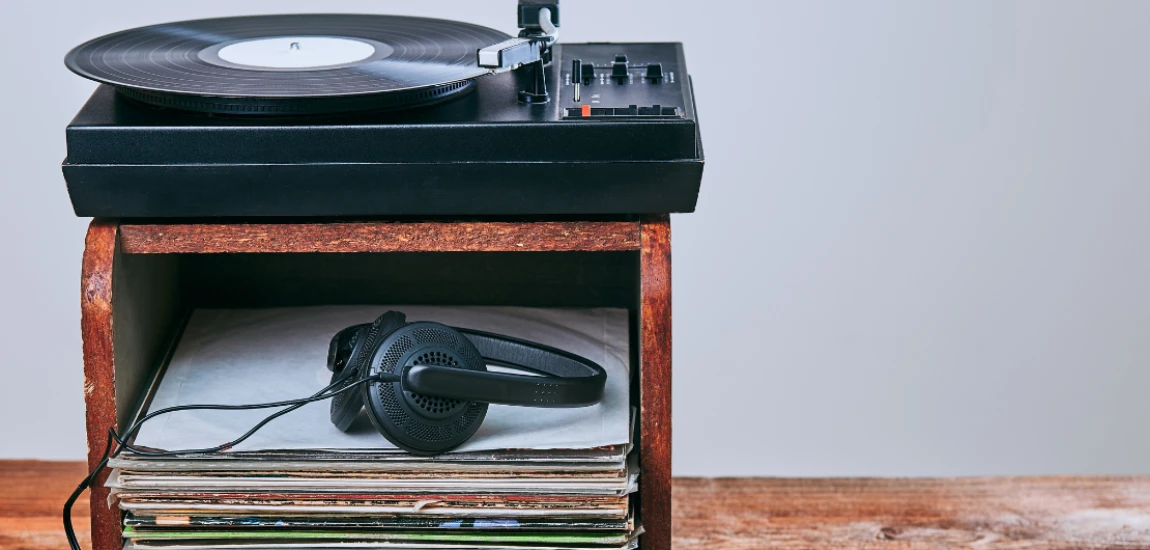Vinyl Comeback: Why Analog Sound Is Trending in the Digital Age

In an era where Spotify, Apple Music, and YouTube dominate the way we consume music, the vinyl comeback stands out as one of the most fascinating cultural shifts of the past two decades. Vinyl records, once declared obsolete, have surged in popularity among both seasoned collectors and younger generations raised on streaming. For the first time since the 1980s, vinyl sales have overtaken CDs, and record stores are experiencing renewed energy worldwide.
This resurgence is not a coincidence. Vinyl offers something digital music cannot: warm analog sound, tangible ownership, and a sense of ritual in listening. Collectors view vinyl as art, audiophiles cherish its unique sound quality, and Gen Z listeners embrace it as a retro yet authentic alternative to playlists. In this blog, we’ll explore why vinyl is back, what it represents in today’s fast-paced digital culture, and how it’s shaping the future of music.
The Unique Allure of Analog Sound

Why Vinyl Sounds Warmer
Vinyl captures music in analog form, meaning the grooves on a record represent continuous sound waves rather than compressed data. This gives vinyl a warmth, richness, and depth that compressed MP3s often lose. Audiophiles appreciate the imperfections—like slight crackles—that make vinyl feel raw and authentic.
Emotional Connection Through Listening
Unlike digital music, which encourages background listening, vinyl promotes intentionality. Lowering the needle, flipping sides, and listening to an album in its entirety create a sense of emotional intimacy with the music. This ritual transforms listening from a convenience into an experience.
Cross-Generational Appeal
Older generations feel nostalgic when revisiting records, while younger audiences see vinyl as fresh, artistic, and meaningful. This crossover appeal explains why vinyl sales are booming across age groups. It’s a reminder that music is more than just sound—it’s memory, culture, and connection.
Vinyl as a Tangible and Visual Experience

The Power of Album Artwork
One of vinyl’s strongest appeals is its large-format album art. From classic covers like Pink Floyd’s The Dark Side of the Moon to modern experimental designs, album sleeves are collectible works of art in their own right. Unlike tiny digital thumbnails, vinyl artwork demands attention.
Owning Music in a Physical Form
Vinyl restores the feeling of music as an object of value. In the digital era, songs feel disposable—downloaded, skipped, or deleted at will. But a vinyl record is something to hold, display, and treasure, giving music a sense of permanence and ownership.
Rituals Around Playing Records
From removing a record from its sleeve to placing it on a turntable, vinyl listening creates a mindful ritual. Many collectors describe it as meditative, slowing them down in contrast to the instant gratification of streaming.
Nostalgia and Retro Culture in the Vinyl Comeback

The Influence of Retro Trends
Vinyl fits perfectly into the larger trend of retro revival—from vintage fashion to Polaroid cameras. Nostalgia has become a driving force in consumer culture, and vinyl symbolizes authenticity in a world of mass-produced digital content.
Millennials and Gen Z Leading the Charge
Surprisingly, the vinyl comeback isn’t led solely by baby boomers. Millennials and Gen Z listeners are major contributors to the market, often discovering artists digitally and then purchasing vinyl to make a deeper connection. For them, records symbolize rebellion against digital overload.
Bridging Past and Present
Vinyl bridges eras by letting listeners enjoy both old classics and modern hits in a traditional format. New artists release vinyl editions alongside streaming drops, showing how analog and digital can coexist in harmony.
Vinyl as a Collector’s Item and Investment

Records as Cultural Artifacts
Vinyl has become more than a listening medium—it’s a collector’s market. Rare first pressings, limited editions, and colored vinyl are highly sought-after, sometimes selling for thousands of dollars. Collectors see records as both art and investment.
The Role of Record Stores and Communities
Independent record shops are thriving again, becoming cultural hubs where collectors, DJs, and music lovers gather. Events like Record Store Day highlight the sense of community that vinyl creates, uniting people around their shared passion.
Artists and Special Releases
Musicians now release vinyl in exclusive forms—glow-in-the-dark editions, picture discs, or signed records. These unique versions boost sales and strengthen fan loyalty, transforming vinyl into both music and merchandise.
Vinyl’s Role in Lifestyle and Culture

Vinyl as a Statement of Identity
Owning vinyl is often about more than just listening—it’s a lifestyle choice. Collectors see themselves as curators of culture, choosing to slow down and appreciate albums rather than chasing endless playlists.
Revival of Listening Parties
The vinyl comeback has brought back listening parties, where people gather to enjoy albums together. These events promote shared experiences, unlike digital listening which is often solitary.
Vinyl in Pop Culture
Vinyl’s cultural presence is evident in fashion campaigns, films, and even interior design trends. Records are often displayed as art, signaling creativity and authenticity in a person’s lifestyle.
The Relationship Between Streaming and Vinyl

Streaming as a Gateway to Vinyl
Ironically, streaming platforms have helped vinyl’s resurgence. Listeners discover artists on Spotify or Apple Music, then purchase vinyl for a deeper, more permanent connection to their favorite albums.
Hybrid Listening Habits
Today’s listeners don’t choose between streaming and vinyl—they embrace both. Digital offers convenience, while vinyl provides authenticity and immersion. This hybrid listening habit ensures vinyl’s relevance in the modern era.
Record Labels Embracing Both Formats
Major and independent labels alike now release vinyl editions alongside digital drops. This dual approach recognizes that fans want flexibility—streaming for everyday listening and vinyl for special experiences.
The Future of Vinyl in a Digital Age

Continued Growth in Sales
Reports show vinyl sales growing year after year, with new pressing plants opening to meet demand. Far from a fad, vinyl has become a mainstream alternative to digital.
Innovation in Vinyl Production
The industry is innovating with eco-friendly pressing methods, recycled materials, and unique designs like colored vinyl and holographic effects. These keep collectors excited and engaged.
Vinyl as a Premium Experience
Vinyl won’t replace streaming, but it doesn’t need to. Its role is to offer a premium, immersive experience that digital formats cannot replicate. In the future, vinyl will remain a cultural statement as much as a listening medium.




